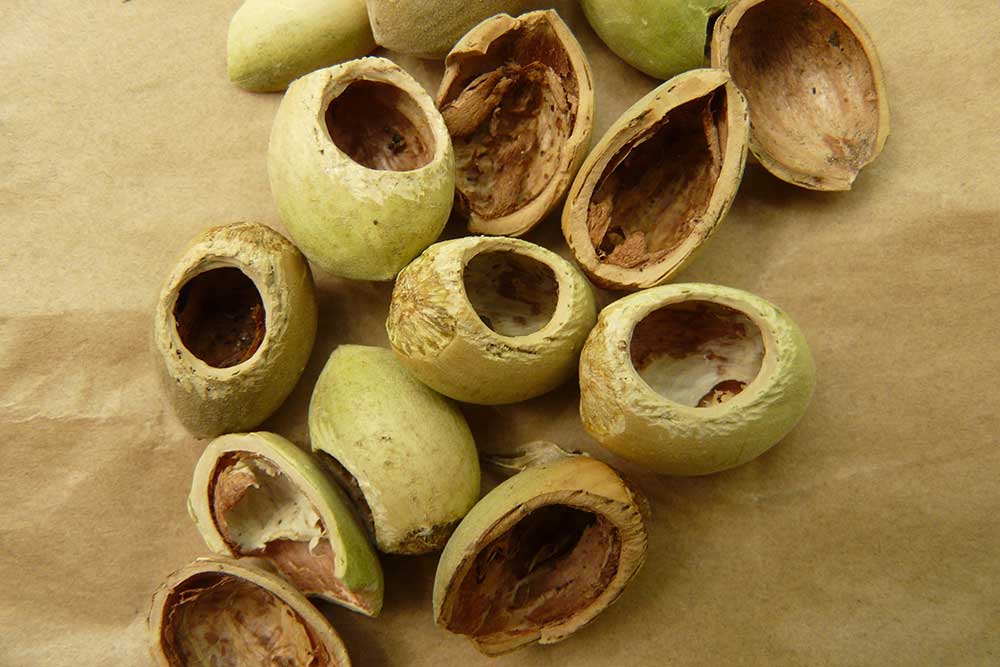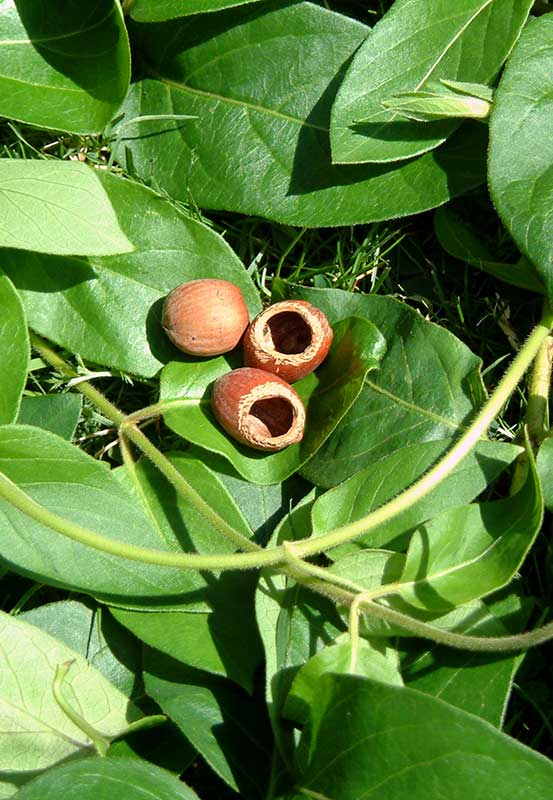Dormouse nut hunt

Dormice are one of our rarest small mammals and very hard to find in the wild. Luckily, dormice leave tell-tale signs when they eat hazel nuts – one of their favourite foods. Dormice open these nuts whilst they are still green, on the tree and relatively soft to nibble but the shells turn brown quite quickly after they are discarded and fall to the ground. By searching for these shells it is possible to find out where dormice live in order to protect them in the future.
History of the hunt
In 1993 we asked the public to join in the first Great Nut Hunt. At the time it was the largest voluntary wildlife survey undertaken in Europe. In total, almost 250,000 nuts were found, of which over 13,000 were sent into the Chief Nutter for verification. 1,352 of those hazel nuts had indeed been eaten by dormice, identifying an astounding 334 new sites. Dormouse sites were confirmed in 29 counties across England and Wales, with 81 sites in Devon and 41 sites in Dorset.
In 2001, we launched the second Great Nut Hunt, to find new sites and also to revisit those found in 1993, to check whether dormice were still there. This survey found 136 sites with positive signs of hazel dormice. This brought the total of known dormouse sites throughout the UK to just over 800; not many for a mouse-sized animal and just a fraction of the number of sites that the dormouse would have occupied a century ago.

How to hunt for nuts
A nut hunt is really very simple and makes an ideal family expedition. The only extra equipment you will need is a magnifying glass. The best time to carry out the survey is during the autumn and winter when there are no leaves on the trees and the discarded nut shells are easiest to find on the woodland floor.
For details on how to practically undertake a nut hunt, we have produced this information sheet:
We have been working to save hazel dormice in the UK for over 20 years. Find out about our campaigns and how you can help.
